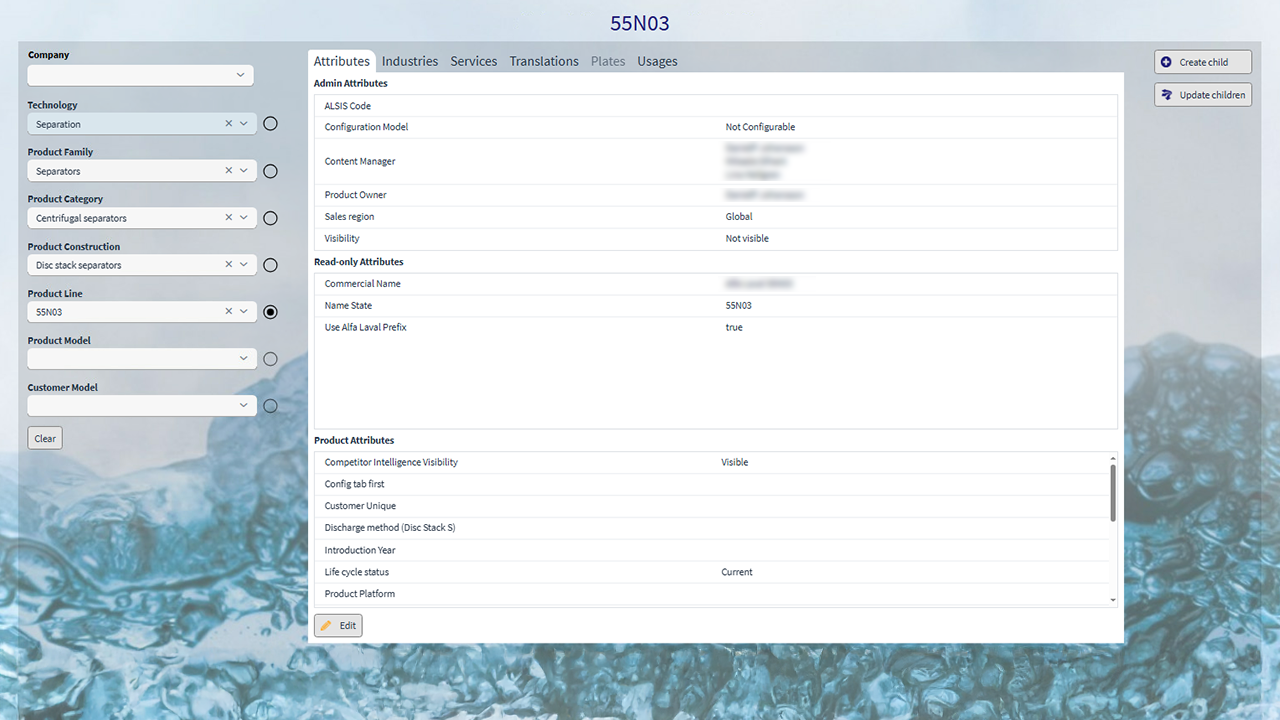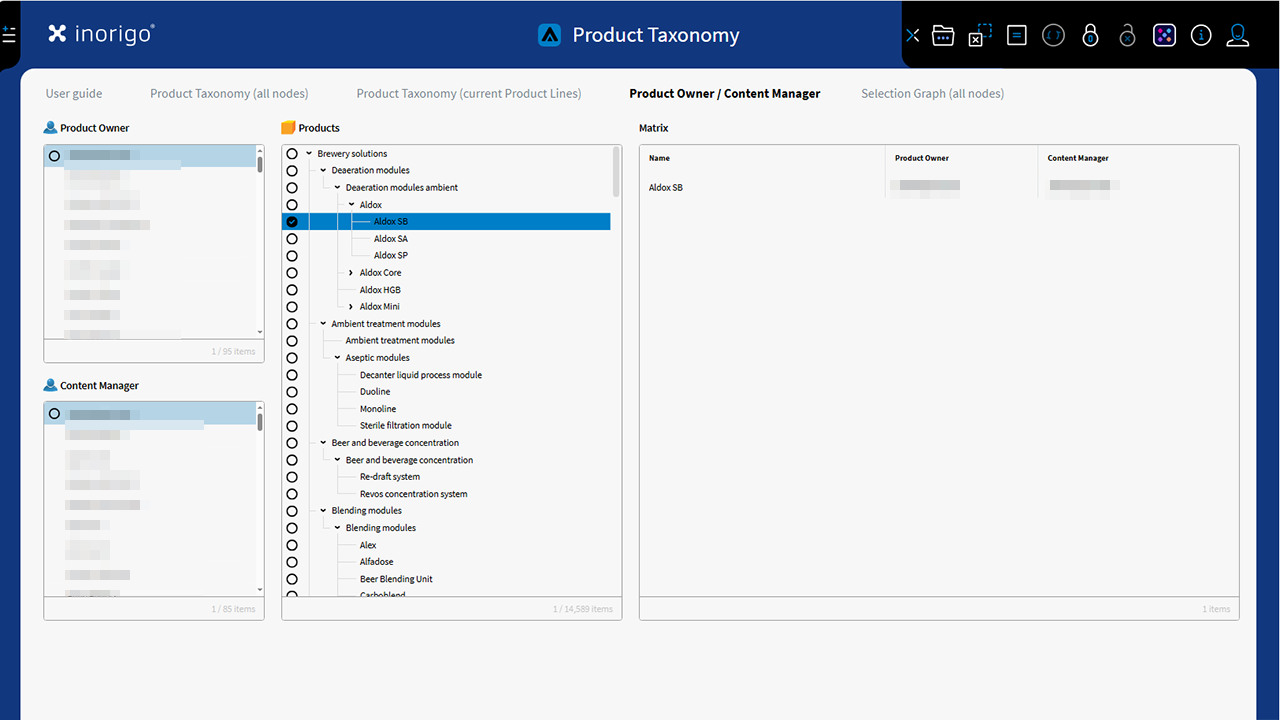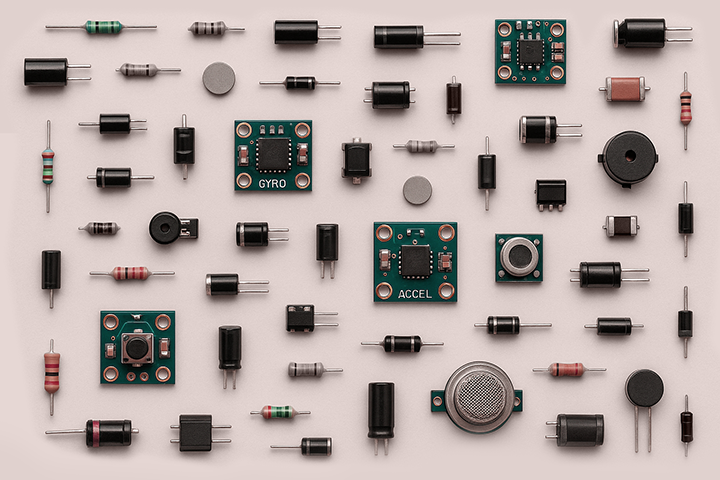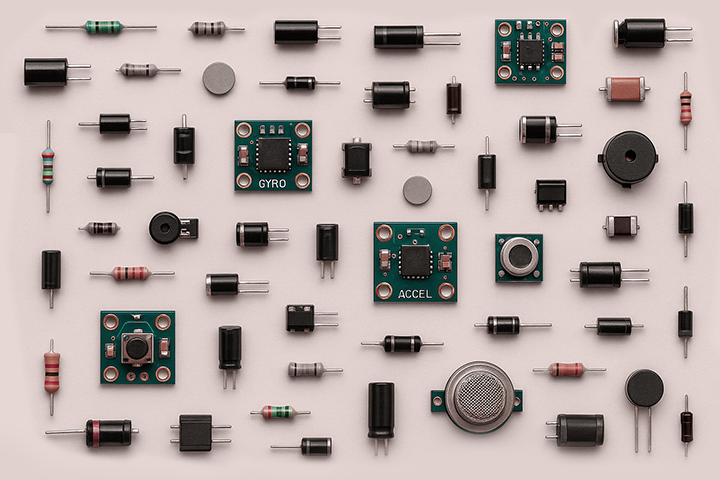3× Increase in Accuracy
Increased Transparency
Reliable AI
Case Study
Boosting AI Accuracy with Structured Product Taxonomy
A client manages their full product taxonomy in inorigo®, with exports sent nightly to their Azure integration for use across multiple systems. When developing an AI-powered field assistant for service technicians, they found that training solely on the product catalogue’s text data did not meet precision needs, prompting the search for richer, structured information.
What was the goal?
Equip Field Technicians with Reliable AI Support
The aim was to develop an AI-powered assistant capable of guiding less experienced service technicians in selecting the correct spare parts and calibration settings when maintaining the installed base.
This would help ensure consistent, high-quality service and reduce dependency on expert staff.
What was getting in the way?
Data Limitations & AI Mistakes
Initial training relied on incomplete and unstructured data, resulting in a subpar and inaccurate precision rate. The lack of context and a structured taxonomy led the AI to misinterpret product properties and functionalities, producing misleading conclusions.
The achieved precision was only at 30-40%
The structured taxonomy was not used in the initial training.
The original datasets did not provide enough context for the specific task.
The LLM confused product properties and functionalities, leading to hallucinations and misleading conclusions.
How was it addressed?
Combining Unstructured & Structured Data
The project began by training machine learning models on text-based product sheets and chat records. Relying solely on text-based data kept the AI assistant’s accuracy too low to be usable in practice, achieving less than 40% precision.
Structured data from the governed product taxonomy — provided by inorigo®, was integrated with these sources. This significantly improved the model’s accuracy.
The taxonomy involves classifications and attributes of products, services, applications and Codes & standards and ontologies (connections) between the domains. Each night different data extractions are sent to stakeholders and IT systems.
What was the result?
Making the Assistant Field-Ready
The inorigo® enhanced AI assistant exceeded the 85% accuracy threshold. The solution now reached the required precision needed to ensure safety and match the expertise of experienced technicians.
The AI assistant now provides technicians only with the most relevant information in the chat, ensuring clarity and increasing efficiency.

Taxonomy Governance Application: Every product owner governs features, attributes and other classifications and relations to other products.

The product taxonomy is published as an application available from their intranet to keep transparency across the entire organization. It has enhanced communication between different internal entities to serve customers in a more efficient and coordinated way.
What was the impact?
Delivering Relevant, High-Precision Guidance
When enriching the context with structured taxonomy data, the solution achieved an average accuracy score of 90%, compared to just 30-40% with the initial, unstructured approach.
Only the most relevant information is presented to the technician in the chat.
Enriched context delivers an average accuracy score of 90%
Increased transparency across the entire organization.
Enhanced communication between different internal entities to serve customers in a more efficient and coordinated way.
Questions about this case or a related challenge?
Reach out anytime — we’ll gladly share more details or discuss how we can assist.

DANIEL LUNDIN
Managing Director
+46 (0)70 921 27 05
daniel.lundin[@]inorigo.com
Connect with me on LinkedIn
More Case Studies

Spare Parts Management
Our partner’s client, a retailer of ready-to-assemble home furnishings, needed help improving the way they manage and distribute spare parts to support product longevity and customer satisfaction…
READ MORE

Enterprise Production Asset Management
A global manufacturer operating more than 20 factories, needed to improve the management of its production assets, including buildings, machines, work centres and IoT sensors…
READ MORE

Harmonized Chemical Data Across Systems
Our client, a multinational pharmaceutical company needed help improving how they manage and align chemical master data…
READ MORE
3× Increase in Accuracy
Increased Transparency
Reliable AI
Case Study
Boosting AI Accuracy with Structured Product Taxonomy
A client manages their full product taxonomy in inorigo®, with exports sent nightly to their Azure integration for use across multiple systems.
When developing an AI-powered field assistant for service technicians, they found that training solely on the product catalogue’s text data did not meet precision needs, prompting the search for richer, structured information.
What was the goal?
Equip Field Technicians With Reliable AI Support
The aim was to develop an AI-powered assistant capable of guiding less experienced service technicians in selecting the correct spare parts and calibration settings when maintaining the installed base.
This would help ensure consistent, high-quality service and reduce dependency on expert staff.
What was getting in the way?
Data Limitations & AI Mistakes
Initial training relied on incomplete and unstructured data, resulting in a subpar and inaccurate precision rate.
The lack of context and a structured taxonomy led the AI to misinterpret product properties and functionalities, producing misleading conclusions.
The achieved precision was only at 30-40%
The structured taxonomy was not used in the initial training.
The original datasets did not provide enough context for the specific task.
The LLM confused product properties and functionalities, leading to hallucinations and misleading conclusions.
How was it addressed?
Combining Unstructured & Structured Data
The project began by training machine learning models on text-based product sheets and chat records. Relying solely on text-based data kept the AI assistant’s accuracy too low to be usable in practice, achieving less than 40% precision.
Structured data from the governed product taxonomy — provided by inorigo®, was integrated with these sources. This significantly improved the model’s accuracy.
The taxonomy involves classifications and attributes of products, services, applications and Codes & standards and ontologies (connections) between the domains. Each night different data extractions are sent to stakeholders and IT systems.
What was the result?
Making The Assistant Field-Ready
The inorigo® enhanced AI assistant exceeded the 85% accuracy threshold. The solution now reached the required precision needed to ensure safety and match the expertise of experienced technicians.
The AI assistant now provides technicians only with the most relevant information in the chat, ensuring clarity and increasing efficiency.

Taxonomy Governance Application: Every product owner governs features, attributes and other classifications and relations to other products.
What was the impact?
Delivering Relevant, High-Precision Guidance
When enriching the context with structured taxonomy data, the solution achieved an average accuracy score of 90%, compared to just 30-40% with the initial, unstructured approach.
Only the most relevant information is presented to the technician in the chat.
Enriched context delivers an average accuracy score of 90%
Increased transparency across the entire organization.
Enhanced communication between different internal entities to serve customers in a more efficient and coordinated way.

Spare parts can be named in different languages, with language suggestion functionality to facilitate the teams. In addition inorigo® enables image search.
Questions about this case or a related challenge?
Reach out anytime — we’ll gladly share more details or discuss how we can assist.

DANIEL LUNDIN
Managing Director
+46 (0)70 921 27 05
daniel.lundin[@]inorigo.com
Connect with me on LinkedIn
More Case Studies

Harmonized Chemical Data Across Systems
Our client, a multinational pharmaceutical company needed help improving how they manage and align chemical master data…
READ MORE

Spare Part Management
Our partner’s client, a retailer of ready-to-assemble home furnishings, needed help improving the way they manage and distribute spare parts to support product longevity and customer satisfaction…
READ MORE

Enterprise Production Asset Management
A global manufacturer operating more than 20 factories, needed to improve the management of its production assets, including buildings, machines, work centres and IoT sensors…